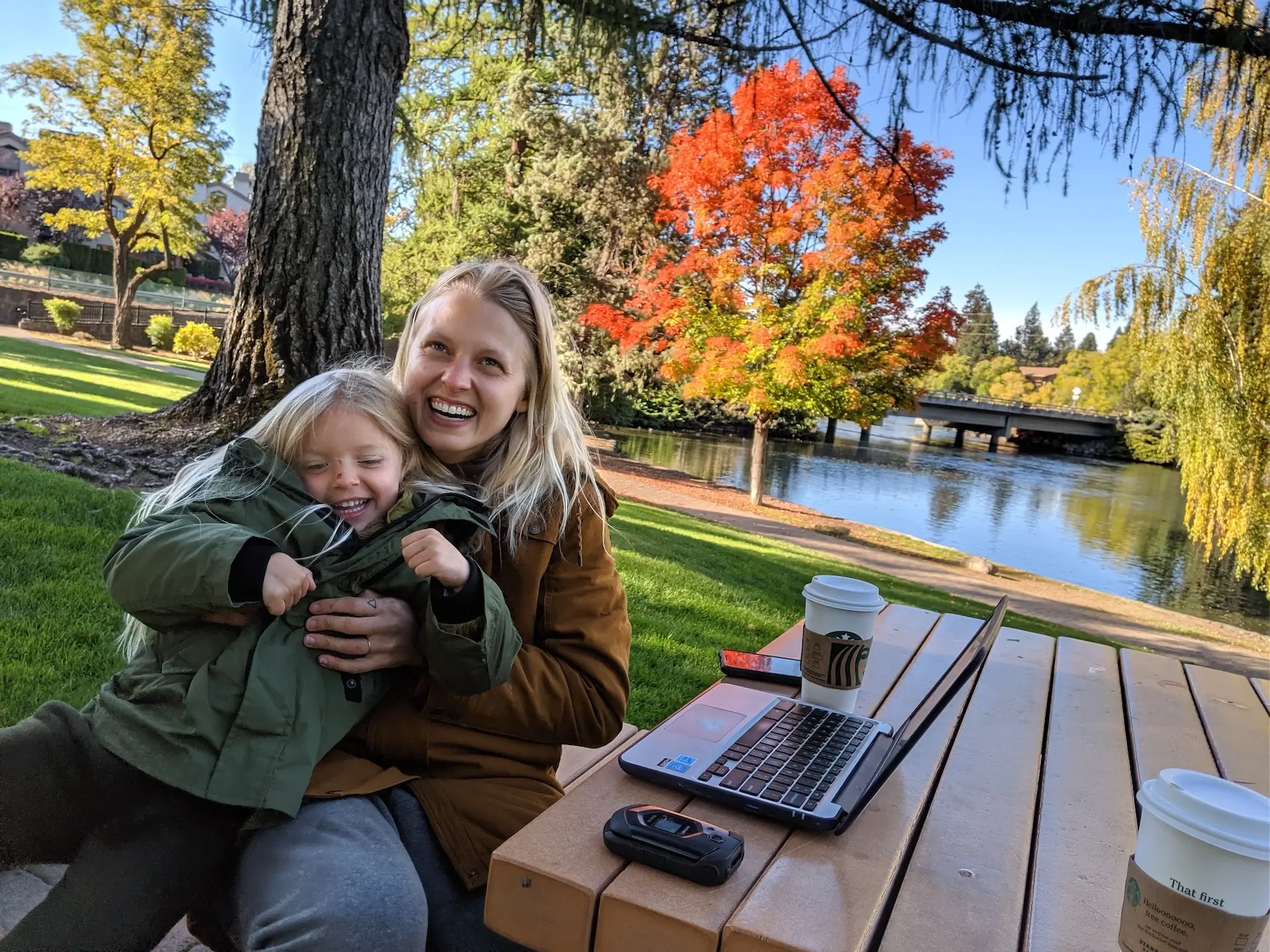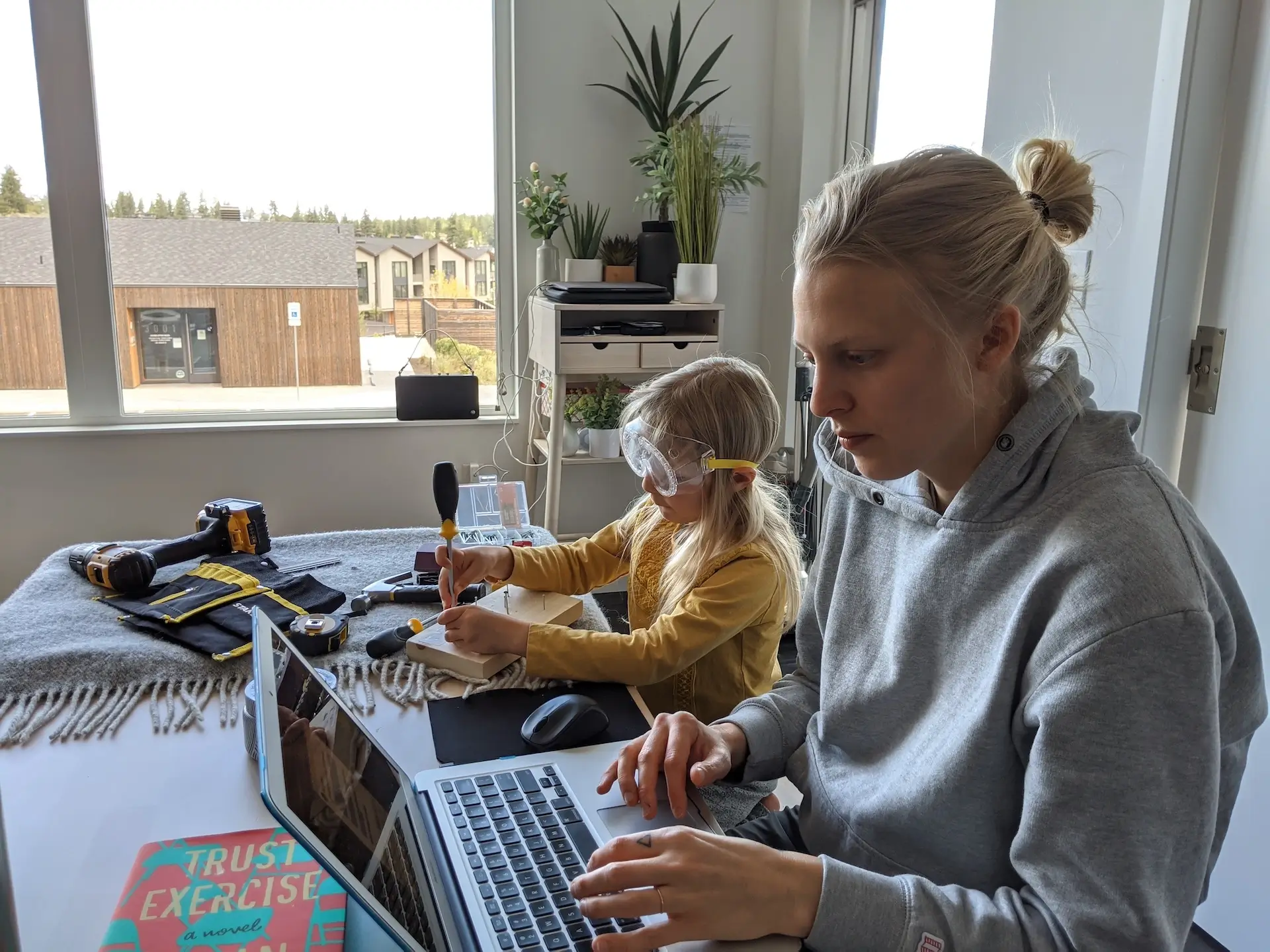September 27, 2025

Homeschooling is a full-time job on its own, but what if you’re also juggling a career from home? More and more families are discovering the challenge (and the blessing) of working remotely while homeschooling their kids. It isn’t always easy, but with creativity and flexibility, it’s absolutely possible to create a routine that works for both you and your children.
Trying to answer emails while teaching math, or finishing a Zoom call while your toddler begs for snacks - it can feel overwhelming. The key is not to aim for perfection but for a balanced rhythm that allows both school and work to coexist. That means structuring your home environment, setting expectations, and finding ways to keep kids engaged without constant supervision.
One of the best ways to balance homeschooling and working is to set up mobile homeschool stations. These are portable baskets, trays, or rolling carts that hold everything your child needs for a subject.
For example:
When you’re working at the kitchen table or in a home office, kids can roll up beside you with their station. They get school done while you stay close enough to supervise.

If you have little ones, homeschooling and working can feel impossible. But activity stations are a game-changer.
The goal isn’t to entertain them for hours on end, but to give you blocks of focused time while they play safely nearby.
One of the often-overlooked strategies is bringing your kids into your work. No, they won’t be running your meetings, but you can teach them valuable skills by sharing what you do.
Kids learn practical life skills when they see real-world applications. And by making them part of your workday, they feel included instead of competing with your time.
The truth is, you won’t be able to give 100% to both work and homeschool at the same time. And that’s okay. The best approach is to:
"Homeschooling while working isn’t about doing it all at once, it’s about weaving both into a sustainable daily rhythm."
Some families prefer a strict schedule, while others thrive on a flexible flow. There’s no right answer, but here are two models to consider:
Both approaches work — the trick is finding the balance that fits your household.
If you feel like you’re failing because the house is messy, the toddler had too much screen time, or your workday was interrupted 20 times, know this: you’re not alone. Homeschooling while working is hard, but it’s also rewarding. You’re teaching your kids resilience, independence, and the value of hard work.
It won’t look perfect - and that’s not the goal. The goal is a home where work and learning can coexist, and where kids see that education happens everywhere, not just at a desk.
Homeschooling while working from home takes planning, patience, and plenty of grace. By setting up mobile homeschool stations, creating activity stations for younger kids, involving your children in your work, and adjusting expectations, you can make it work for your family.
At the end of the day, homeschooling and working isn’t about having a flawless schedule. It’s about creating a lifestyle where your kids feel supported, you feel productive, and everyone learns together.
Q: Can I really homeschool and work full-time?
A: Yes, it’s possible with structure and flexibility. Many parents balance both by planning blocks of time for focused work and homeschool lessons.
Q: What are “mobile homeschool stations”?
A: Portable carts or baskets that hold each subject’s materials so kids can work beside you wherever you’re working.
Q: How do I keep toddlers occupied during work hours?
A: Create activity stations with sensory bins, puzzles, or art projects that can rotate daily to keep things fresh.
Q: Should I stick to a strict homeschool schedule?
A: Not necessarily. Some families thrive on structure while others prefer a flexible rhythm that shifts with work needs.
Q: How can I prevent burnout while homeschooling and working?
A: Prioritize rest, delegate where possible, and remember that progress matters more than perfection.
